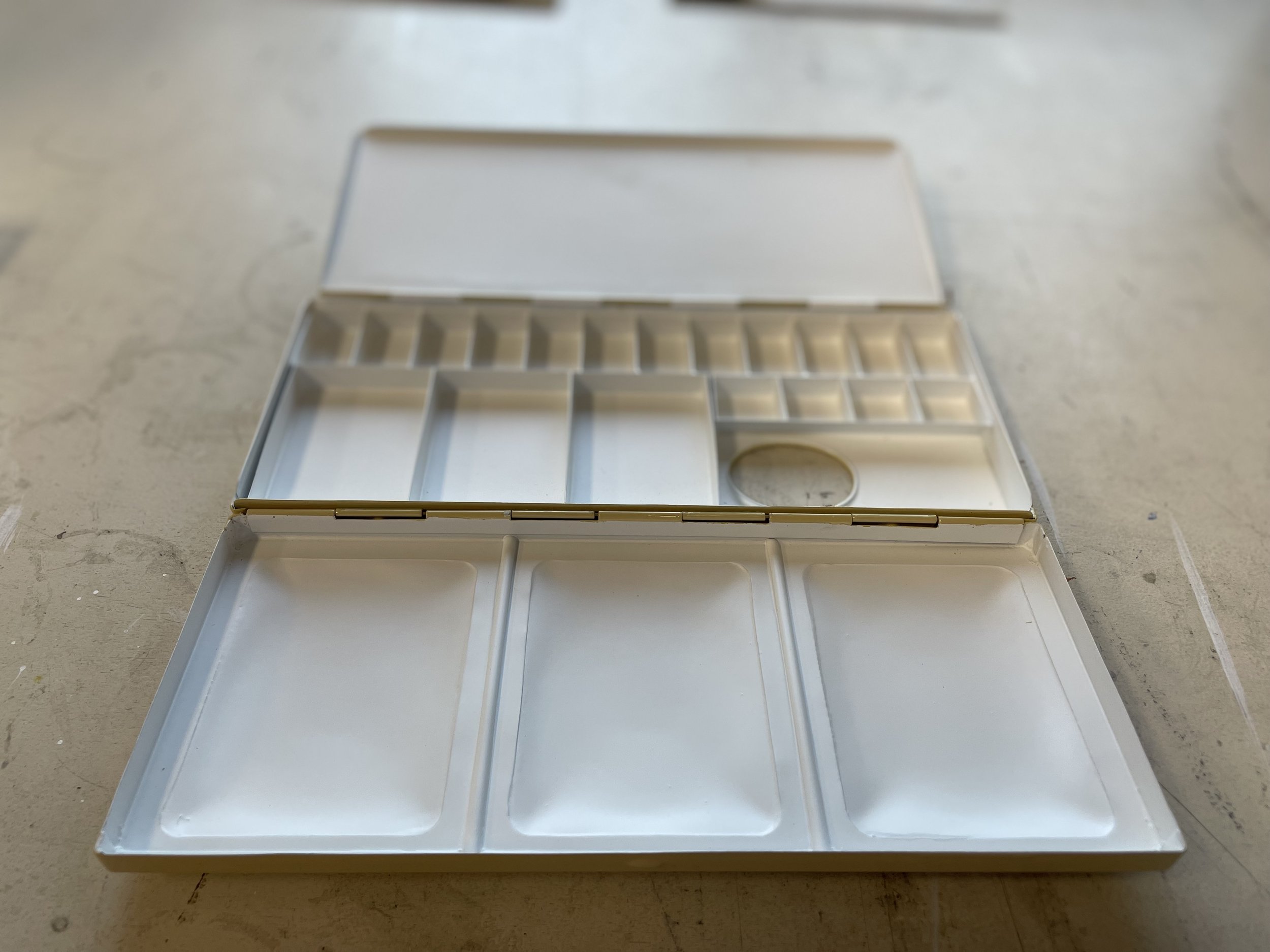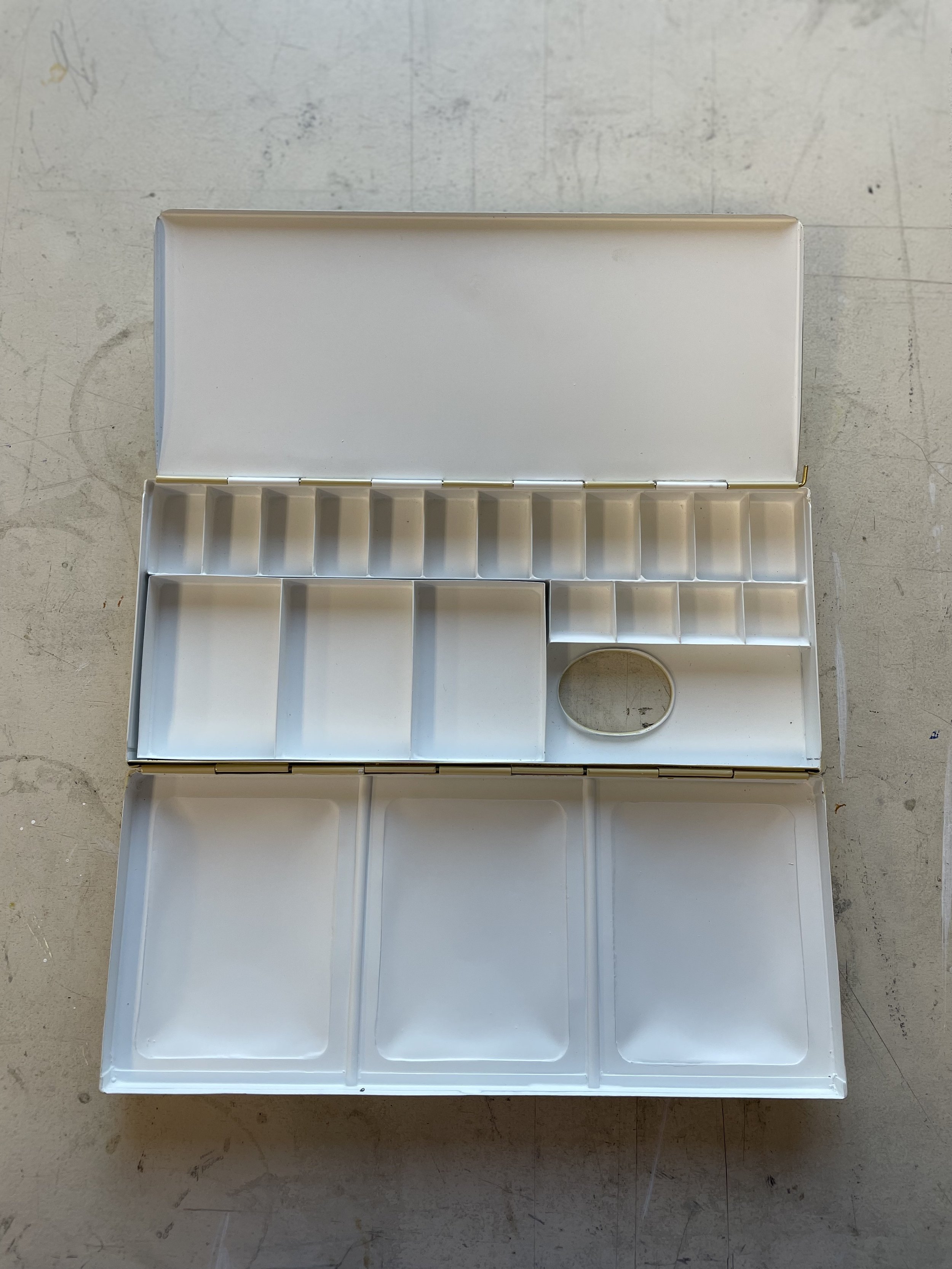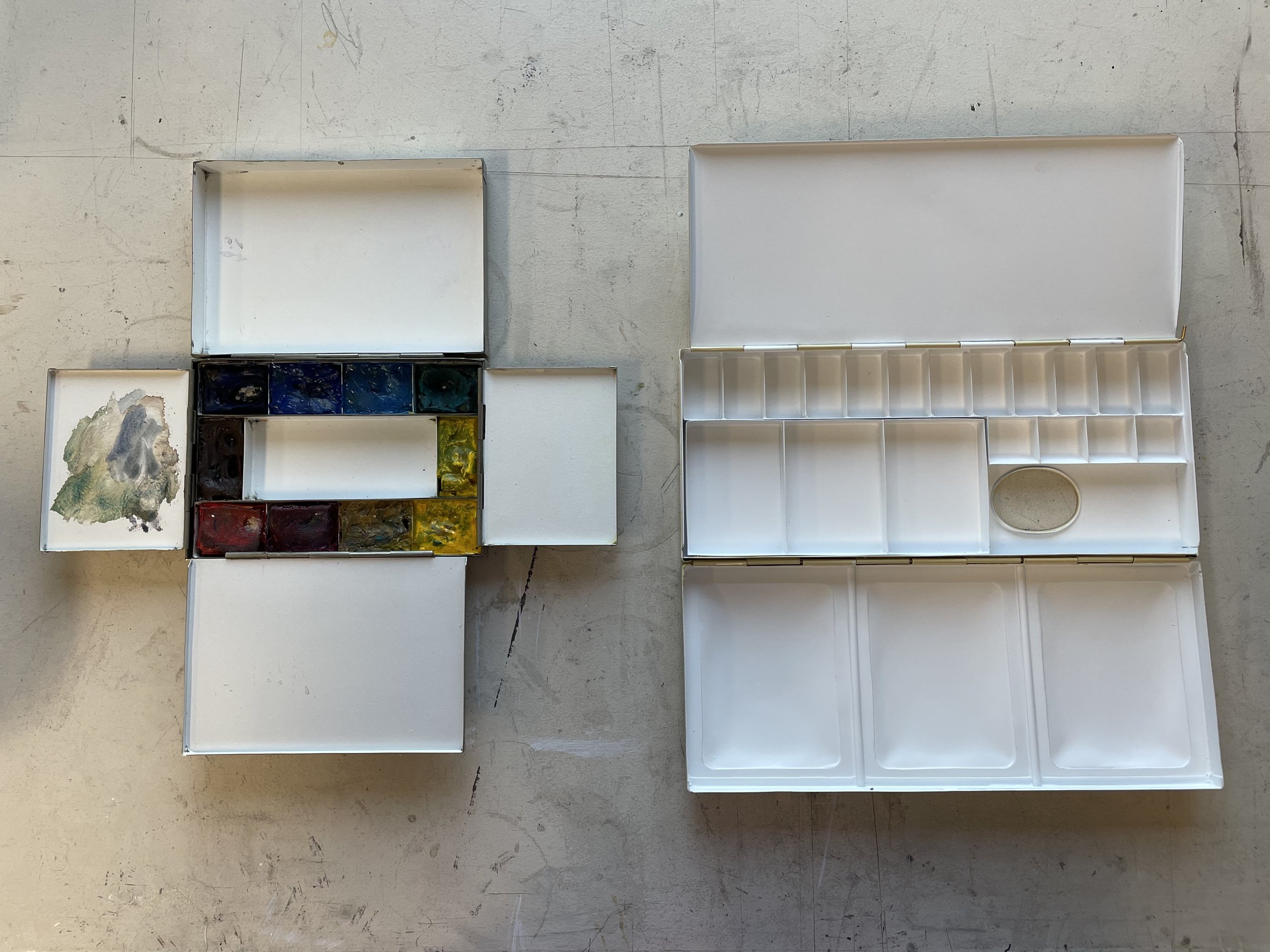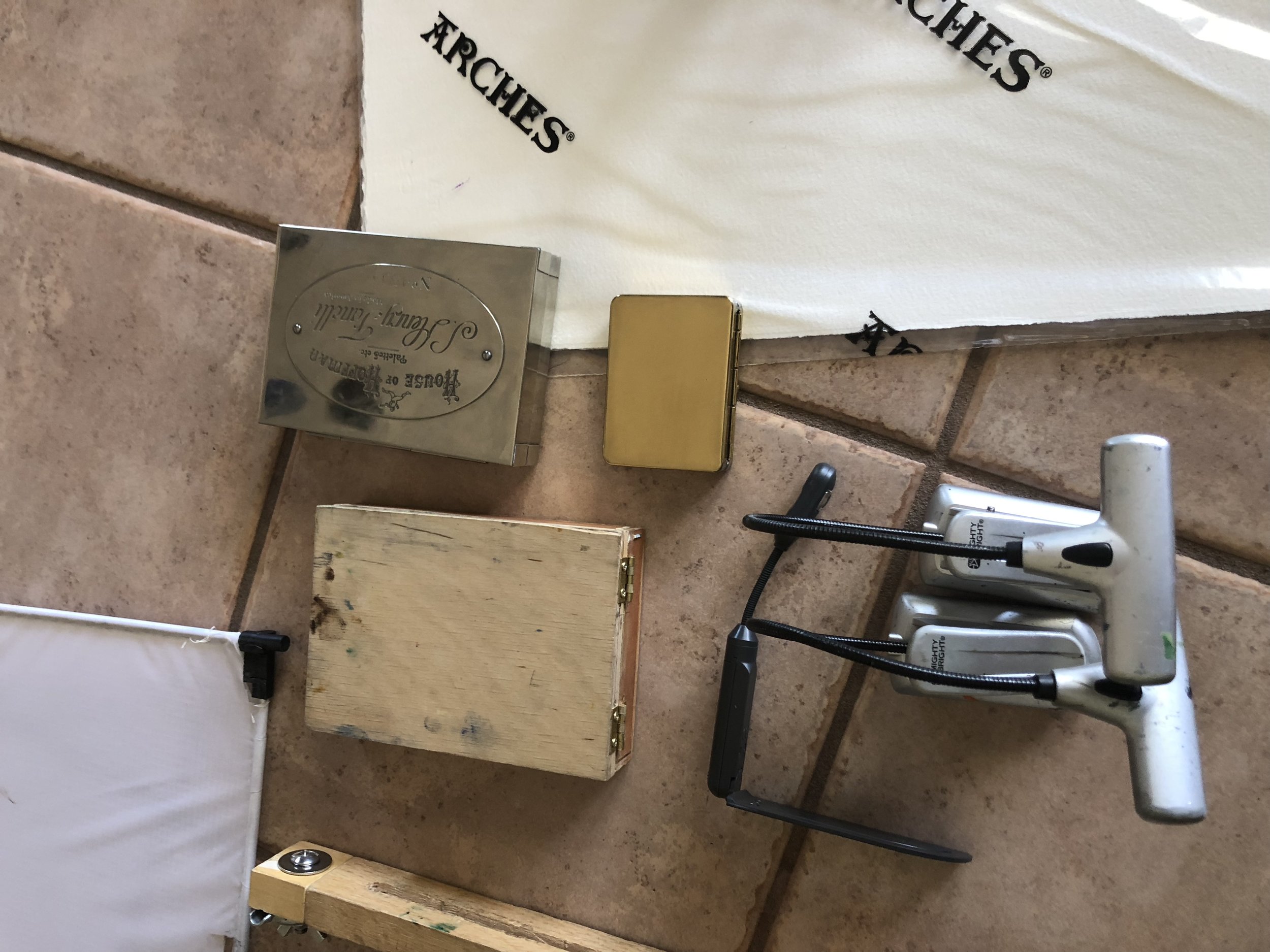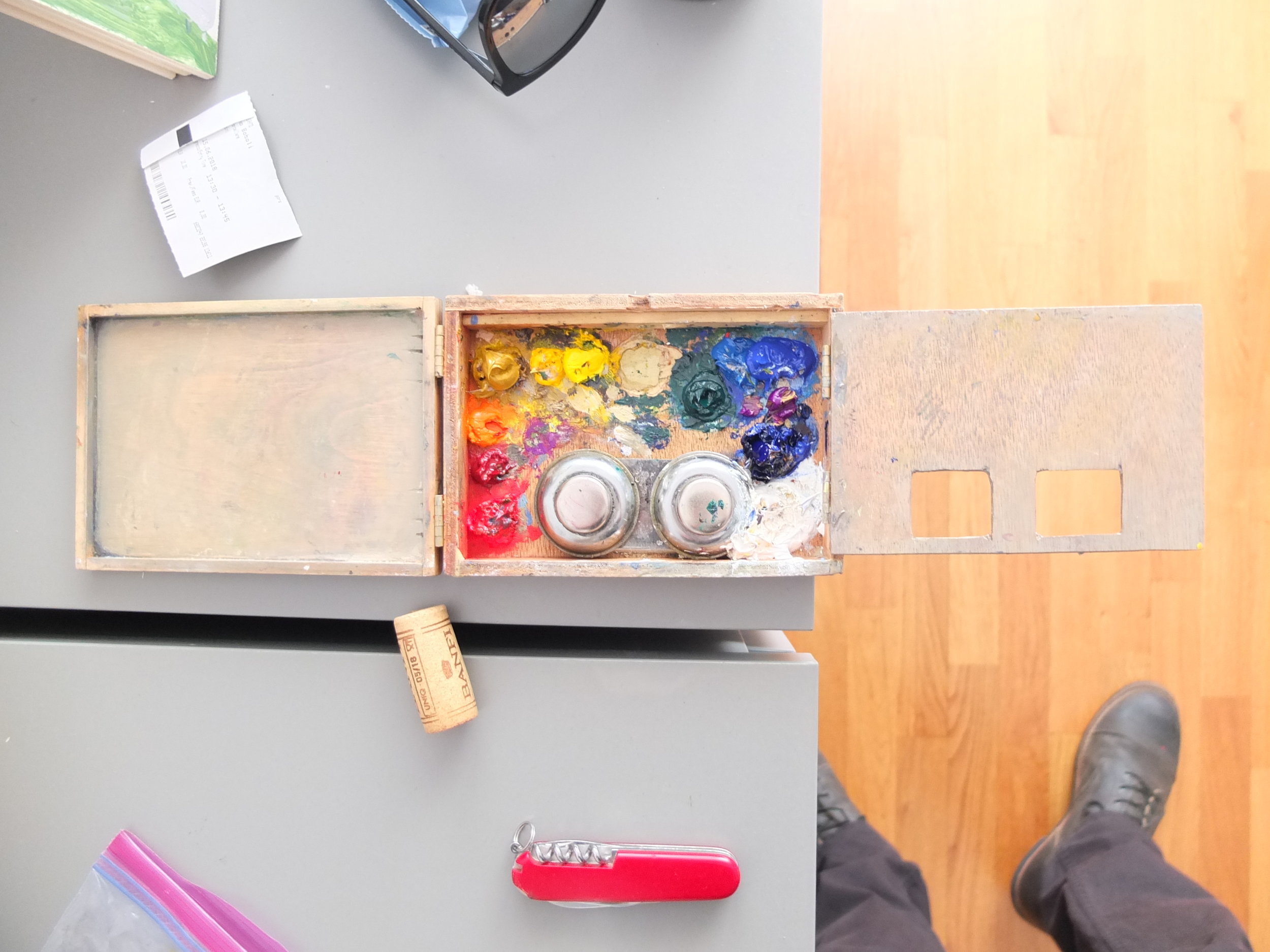Well over a year ago, I drunkenly put down a small deposit for a handmade brass watercolor box made by John Hurtley at “Little Brass Company,” in England. The box is truly a work of art, all the little imperfections in the soldering reminds you this is made by hand, and damn well.
The palette is the Binning Monroe. The box is actually a popular reinterpretation of the original Binning Monro box made in England at the turn of the century. I have a micro palette since 2016 that was made by John as well. The box has served as a stalwart companion for many sketch books and small paintings over the years and I suspect, God willing, many more.
Did I need another palette box? Of course not. I was thinking about the box as function rather than need. I really like large wells and mixing area as well as the overall layout of the box. I really value beautifully made things in my life, in every facet. Painting gear takes precedence in most cases as it is both my profession and obsession. All that being said the small German nickel palette made by Steve Fanelli over at “House of Hoffman,” packs a huge punch. It is battle worn from constant companionship since I believe October of 2014. It has been around continental United States many times as well as Europe, Canada, Mexico, and Costa Rica. It has been dropped, reformed, and modified by Steve. It is better and more beautiful than the day it showed up in the mail. The craftsmanship is unmatched, and undoubtedly will see me to the end of my life and continue on to my children.
Enough of flapping of gums, pictures are what you have come for, and it is what you shall receive.
The two palettes next to each other for comparison.
Open, you can see there is a pretty monstrous amount of room to play with paint on the “Little Brass Box.”
A tantalizing close up of box “150.”



